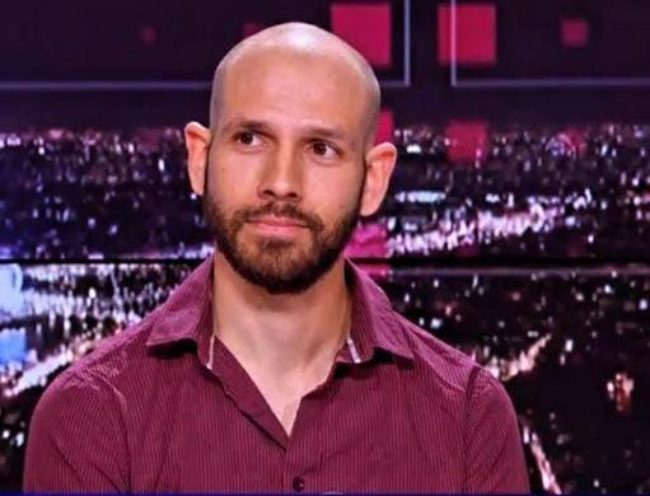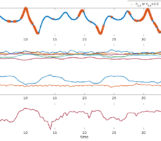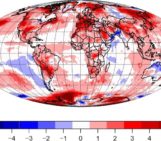
Davide Faranda is a physicist at the French National Center for Scientific Research (CNRS). His main interests are devoted to the construction of a statistical mechanical and dynamical systems framework for the study of atmospheric motions. In particular, his works aim at the characterization of the metastable states of the atmospheric circulation with simple mathematical and statistical tools, and the characterization of rare atmospheric events, such as storms, heatwaves and cold spells.
Davide, the summer is still ongoing but Europe experiences some “unusual” phenomena like winds of more than 200 kilometers per hour, a suddenness that surprised even national weather services and several deaths around Europe. It was the derecho thunderstorm. Is there any explanation of this strong event that hit Corsica, Tuscany, Emilia Romagna and Austria in mid-August?
A thunderstorm is a mechanism for transferring energy from the lower atmosphere, near the sea, to the upper troposphere, where aircrafts fly. The more energy is available, the more violent the storms will be. However, with the Mediterranean Sea 5 degrees warmer than the average of the last 30 years, the energy was available in very large quantities. This gives extremely violent and unpredictable storms. The weather models are used to operate on a colder sea. To understand this, you have to imagine a Formula 1 video game, for example. The developers have modeled the track and even the grass around it, but you can’t see beyond the barriers. For the weather it’s the same, there are barriers beyond which you can’t see to avoid having a model that is too complex and too unstable. In the case of the derecho, the phenomenon was so far from the average that the models were unable to predict what would happen. Even we (the scientific community) were surprised by the violence of these storms.
You said this extreme phenomenon has a specific name: Derecho. Why this name?
It is a classification of very violent storms that takes into account the wind gusts (more than 120km/h) and the size of the affected territory (more than 300 kilometers). I myself did not know this term before last week. These are phenomena that occur more in the Great Plains of the United States, in flat regions with a large amount of available energy. It is not so much a phenomenon that we observe at sea. But this time all the conditions were right. This is something that is observed very rarely in Europe: the storms of July 26, 1983, July 12, 2010 and August 8, 2014 are the only other known cases with characteristics compatible with the definition in France. Few other cases compatible with the definition have been observed in Germany.
Is there any chance it will happen in the future?
After a big storm, the sea drains of its energy and we can expect it to cool down. But this is not what we are seeing today. The heat wave continues and we are back to abnormal temperatures. The conditions are there for another derecho. But that doesn’t necessarily mean we’ll get another one… We certainly need a lot of energy, but we also need cold air from the Atlantic through the upper troposphere. If there is not enough of it, the energy will be dissipated in smaller and localized thunderstorms over time.
This type of phenomenon is quite unpredictable. It is difficult to make seasonal forecasts but there is a risk of having this type of storms again and even Mediterranean cyclones with the increase in sea temperature. We can expect new violent phenomena in the next few weeks… without knowing where they will strike.
Is this a sign of climate change?
Yes, and now it is visible to the naked eye. We ourselves have been surprised by their speed and intensity. We have the impression that the models we use are still too close to the averages observed in the past and prevent us from moving away from them. This is what we are currently testing: have we underestimated climate change, especially extreme events? There are several clues that point to this hypothesis: the warming of the Mediterranean and that of France are stronger than predicted by the thirty or so existing climate models, with the exception of two.
What these two models say?
They are the warmest and most extreme models in which the warming occurs earlier. In the long run, they predict an almost unlivable Earth.
We are already seeing this today. The drought is not only affecting France but also Italy, Spain and even Germany simultaneously. This creates a significant decrease in food production (-30% in Italy alone). If this were to continue for two years in a row, it would be catastrophic. The poorest populations will suffer and this may cause political and social tensions with, in the long run, new wars for access to water and food. These are likely scenarios in a world that is warming beyond 2°C at the global level. The question is not if it will happen, but when it will happen.
So, this means we are sure it will happen but is there any evidence of an acceleration of global warming?
There are a number of mechanisms that could indeed accelerate it and that have not been taken into account in our models because they add complexity. For example, forest fires. Heat waves trigger fires. As the vegetation burns, it produces huge amounts of CO2 and fine particles. These ashes then end up in the atmosphere… and accelerate warming.
These are processes that we are discovering today and that we had not taken into account in our calculations, because it is extremely long to measure and very expensive.
What are the risks to which the European countries are most exposed?
We saw them this summer: heat waves, droughts and intense rain. Not everyone is exposed in the same way. Europe is a special continent with the Atlantic Ocean to the west and the Mediterranean to the south. We have enough energy to transform the heat of the Mediterranean into very strong thunderstorms that go up to the North. We also have a continental territory particularly sensitive to drought and heat waves.
Do we still have a chance of respecting the Paris Agreement, which aims to limit global warming to 1.5°?
No. We will exceed it if we do not reduce our emissions fast enough. We only have three years left to do it. But global environmental policies are not moving in that direction. However, it is still important to reduce warming to 2 or 2.5° by 2050. The IPCC report provides solutions to achieve this without changing our lifestyle too much.
How do you manage not to sink into despair?
Seeing all these movements, these people who are pushing to change their lifestyle and society, is very encouraging. We are happy about this collective awareness! So much for the positive side. On the negative side, it is true that we are surprised by the acceleration of extreme phenomena. It is difficult to live in this apocalyptic state but nothing is done yet. There are still levers for action. It is possible to change our way of life which is incompatible with the planet. Too fast, too much consumption, too much immediacy… we must return to a more natural rhythm of life. This can only do us good. So yes, there is also hope.




